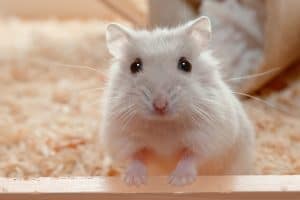You may be coming into your first winter months having a hamster. Did you know the cold can be detrimental to our small, furry friends? You want to make sure your hamster is warm and safe from the frost this winter. So, what will you need to protect your companion from the cold? We have searched high and low to provide you with all the information you need to know to ensure a warm season for your hamster.
The cold can have a large impact on your hamster's immune system, making it important to ensure its enclosure is warm during the frigid months. Some of the best ways to keep your hamster warm this winter include:
- Bedding
- Blankets
- Cage placement
- Heating equipment
- Insulation
- Food
- Cage props
We will elaborate on each of these effective ways to keep your hamster snug and offer advice on affordable options. Keep reading as we discuss a hamster's behavior in the winter, what a hibernating hamster is all about, and specifics on what temperature is ideal for your companion.
![An incredibly cute hamster cuddling warmly on a white fur blanket, How To Keep Your Hamster Warm During Wintertime [7 Suggestions]](https://hamsters101.com/wp-content/uploads/2020/10/How-To-Keep-Your-Hamster-Warm-During-Wintertime-7-Suggestions.jpg)
Methods To Keep Your Hamster Warm This Winter
A hamster's ideal temperature range is between 69 and 72 degrees Fahrenheit. If not living in that temperature range, your hamster risks illness or false hibernation. These things make it critical to ensure that your hamster has a comfortable, warm living environment in the winter.
Our pets can't communicate that they are cold. This makes it important we take the necessary precautions to keep our furry companions in a regulated, warm environment. Here is what you can use.
Bedding
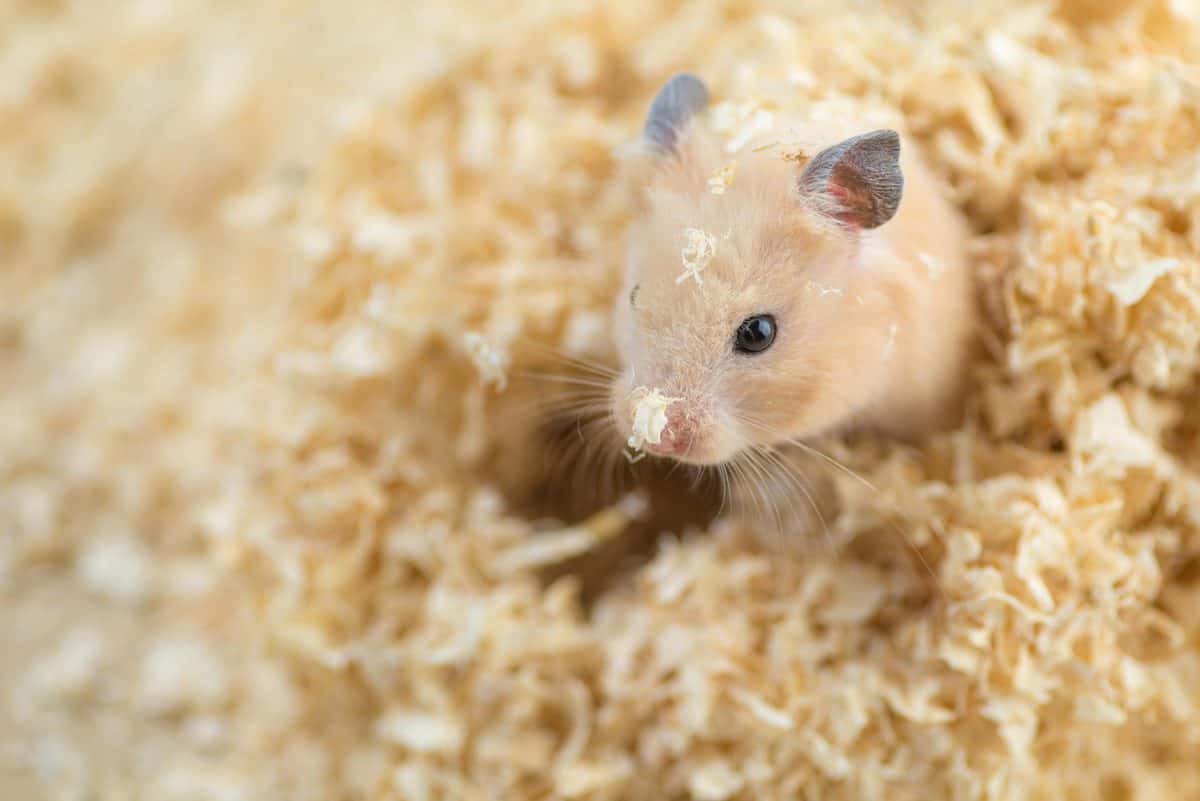
Your hamster can use bedding in a variety of ways. They will nest, dig, burrow, and pull on bedding to keep warm and comfortable. When the cold starts to creep in, it is a good idea to use extra bedding in the enclosure. You can use shredded newspaper or tissue to place on top of your usual bedding for a cheap alternative. The more bedding the better!
Check out this recyclable small pet bedding on Amazon.
Blankets
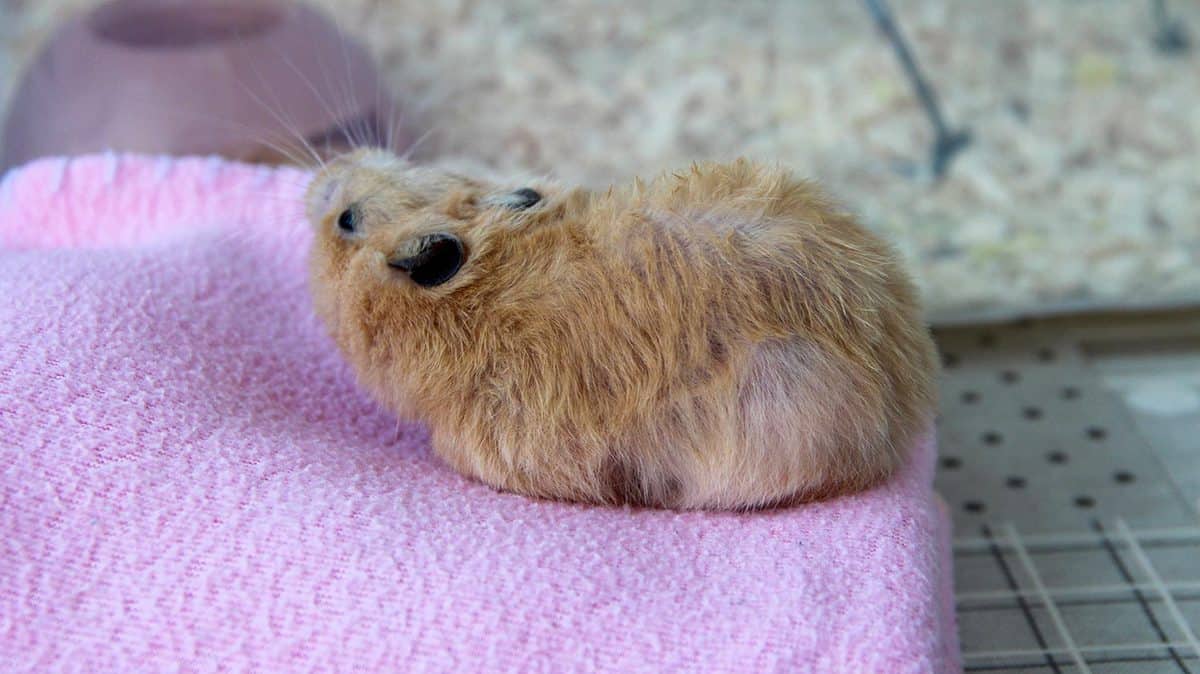
A small blanket or piece of fleece fabric can be used to layer the bottom of the cage. This layer will create some insulation for your hamster's home while trapping heat. Small pieces of cloth can be placed inside the cage. Your hamster may use these to create a comfy nest. There are many washable options available for your convenience.
You can view this reusable cage liner on Amazon.
Cage Placement
The location of your pet's cage will make a notable difference. You certainly do not want the enclosure on a porch or in a garage during winter. Your hamster should be in a cozy room or corner inside the house. The cage should be away from any drafty windows or doors. Eliminating the cold outer environment is the first step to winterizing your hamster home.
Read more: Where Should I Put My Hamster's Cage?
Heating Equipment
Control yours and your hamster's environment by adding regulated heat. Heating equipment can be used in and around your enclosure. Some heating elements you can use include:
- Heating pad
- Warm water bottles
- Room heater
Heating Pads
Heating pads are useful for under the cage. It is recommended to buy a reptile under-tank heating pad due to the self-regulating feature. There are risks of overheating when using a human-grade heating pad.
Heating pads should only be placed under one side of the cage. This will allow your hamster to move to the other side of the cage if they are too hot.
Check out this under-tank heating pad on Amazon.
Warm Water Bottles
Warm water bottles can be placed inside or on top of your cage. They are an affordable alternative when it comes to finding a heat source. When you place them inside the cage, wrap them in thick towels to protect your pet and the bottle. If the bottle is on top, ensure that your hamster cannot reach it to avoid them biting and puncturing the bottle.
Room Heater
You can turn up the heat in your home or add a room heater where the cage is located. You never want this heater right next to or in front of your hamster's home. A room heater should indirectly create a warm environment for your companion.
Consider purchasing a space heater with a timer to provide constant regulation of the room's temperature. You don't want the temperature to be fluctuating often. Maintaining a constant warm temperature is crucial to your pet's health this winter.
Check out this small space heater on Amazon.
Insulation
We talked about using a blanket to insulate inside your cage, but you should also consider insulation outside the cage and throughout your room. Placing plastic coverings over drafty windows is an option. Rolled up towels or draft stoppers can be used for windows and under doors. It is ideal to avoid having your cage in a drafty room altogether if possible.
Check out this door draft stopper on Amazon.
Food
Your hamster will use a lot of energy to keep warm. Not having enough nutrition can induce hibernation in order to conserve energy. Provide larger meals or extra portions of food and water to keep up with their spent energy. Make sure your hamster is eating a well-balanced commercial diet with added fatty treats.
Need more guidance on what to feed your hamster? Check out our post, How To Feed Hamsters - A Guide For Beginners.
Click here to see this hamster food on Amazon.
Cage Props
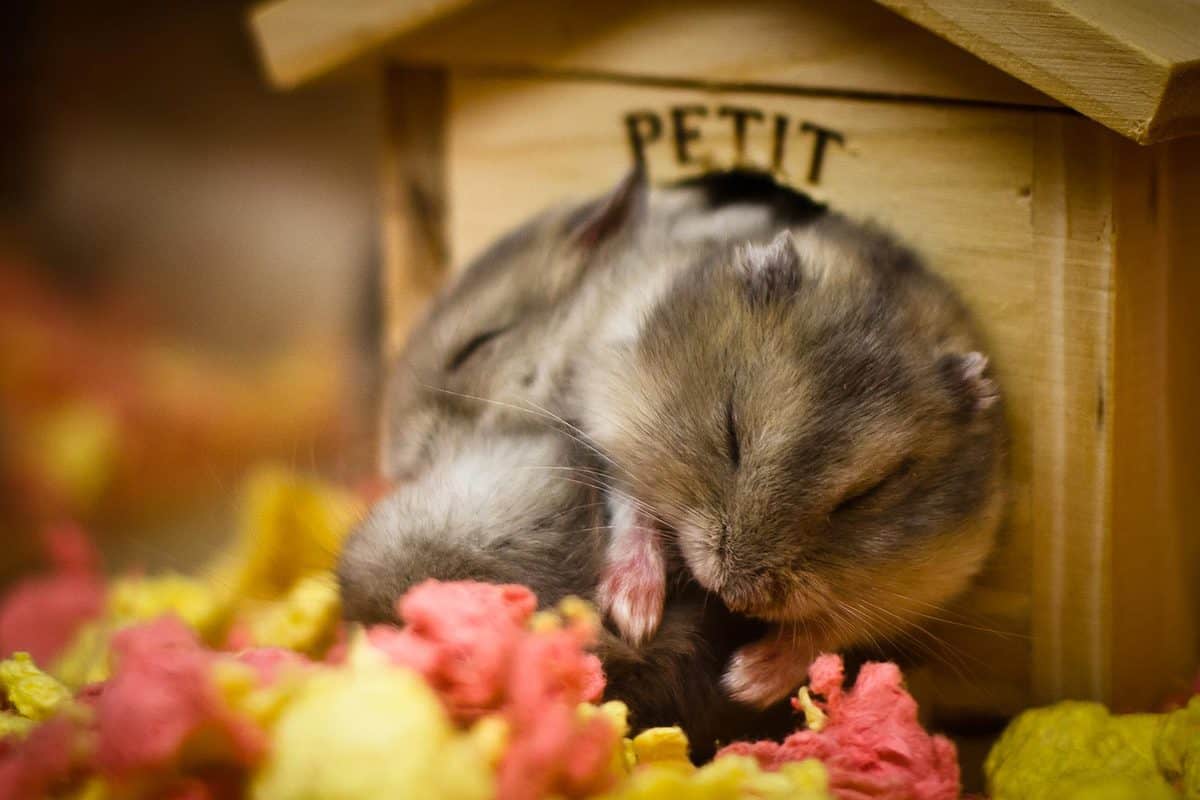
Placing "hidey homes" in your pet's enclosure will give them spaces to be cozy. You can purchase items like tubes, fuzzy beds, or even hammocks for your hamster. Items around the house, like toilet rolls or old socks, can be used for a cheaper alternative.
Hamsters will often pull their bedding or substrate into these snug places to create a little cocoon of warmth. There are countless styles and designs of cage props to choose from. Check out some examples from Amazon below.
2-Pack Hamster Accessories
Check out this bed set on Amazon.
Hamster Hideout
Check out this hamster hideout on Amazon.
Multilayered Hamster Hammock
Check out this hamster hammock on Amazon.
Should You Cover Your Hamster Cage At Night?
It is not necessary to cover the cage at night. If you have the heating elements outlined above, your hamster should be adequately warmed. Are you still worried about cold air getting in? If you do feel like you absolutely need to cover the cage, you should only cover half of it or use a covering with large openings. You'll risk reducing ventilation and increasing humidity in the enclosure if the entire cage is covered. Any extreme environment change, cold-, hot-, or humidity-related create a health risk for your hamster.
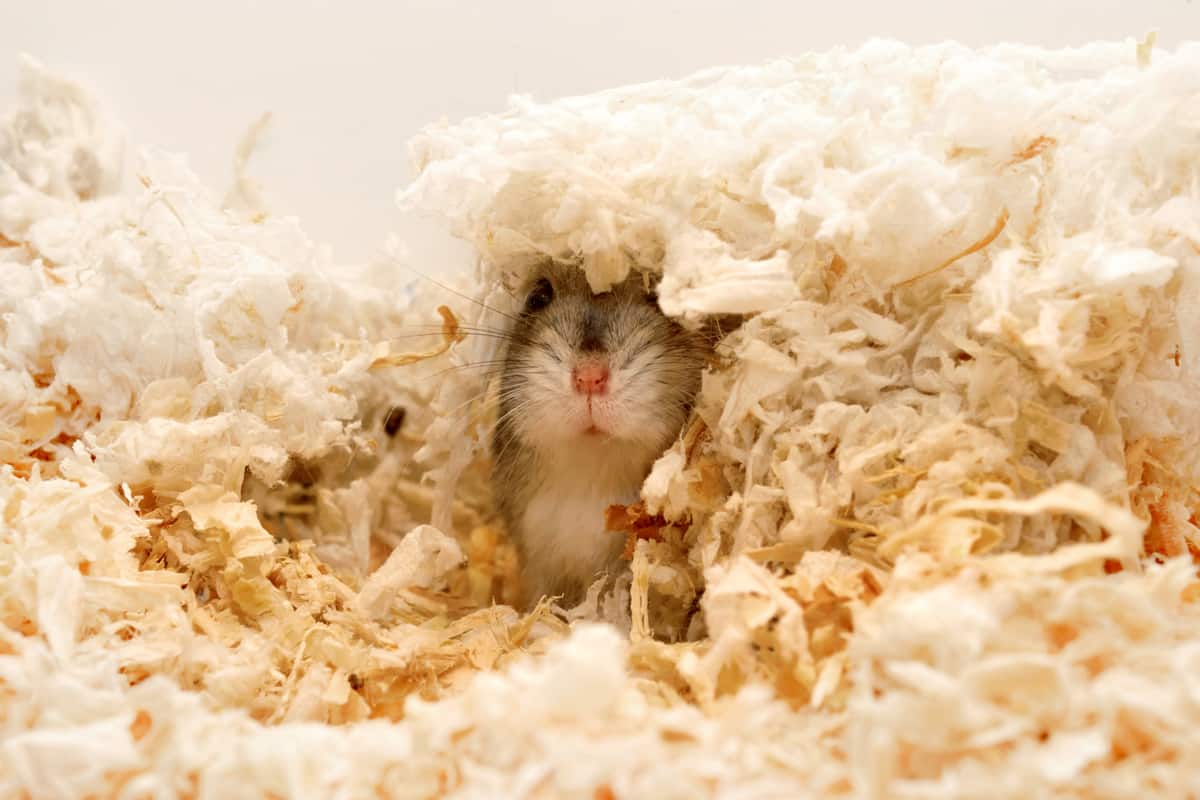
What Temperature Is Too Cold For Hamsters?
The necessary temperature range for a hamster is 65 to 75 degrees Fahrenheit, the most ideal temperature being between 69 and 72 degrees Fahrenheit. If your hamster endures temperatures less than 65 degrees, they are at risk for illness and false hibernation. Temporary hibernation is also known as "torpor" and can cause your pet to suffer from severe dehydration.
Even a couple of hours in cold temperatures can have serious consequences. Some warning signs that your hamster is cold include lack of appetite, shivering, trouble breathing, and lethargy.
You can read more about the ideal temperature in our article, What's The Ideal Room Temperature For A Hamster?
What Do Hibernating Hamsters Look Like?
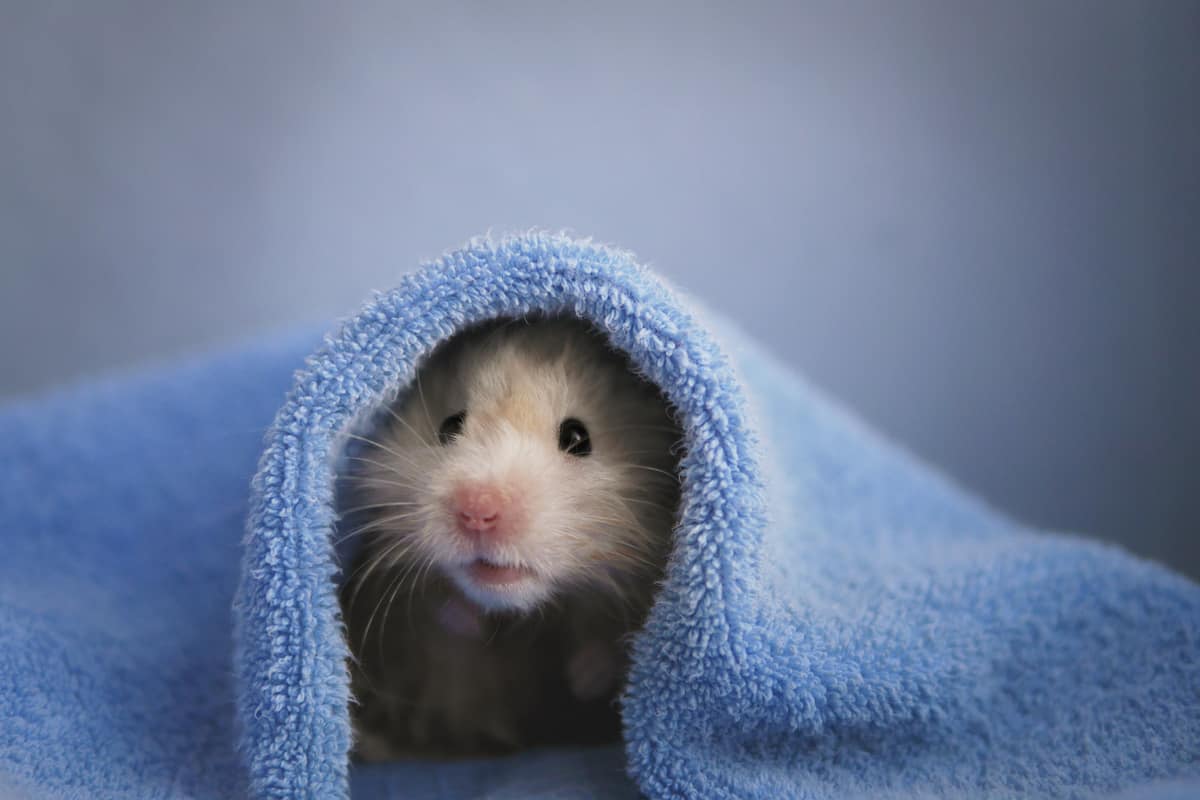
It can be worrisome if your hamster goes into hibernation. Your pet will exhibit little signs of life. They will appear limp and unresponsive. Their breathing and heart rate will become exceptionally slow. Your pet will feel cold to the touch. Areas that have no fur like the ears, nose, and paws will feel frigid.
Some owners have explained that their hamster appeared to be dead but was actually hibernating. Make sure you look closely for the slow breath. Sometimes, you may catch your hamster binging on food right before they go into hibernation. While your pet likely stocked up on food, they are unfortunately still at high risk for dehydration when hibernating.
If your hamster is exhibiting signs of hibernation due to cold temperatures, you will want to get them into a warm environment quickly. It can take a few hours or days for your hamster to get out of their hibernating state. Consider consulting a veterinarian if you have concerns about dehydration.
Are Hamsters Less Active During Winter?
Some breeds of hamsters will become less active during the winter. All hamsters will become less active if they are cold. A decrease in activity can be noticed if your hamster is drinking less, roaming less, and sleeping more.
If you observe a drastic change in your hamster's routine, evaluate their home and surrounding temperatures to make sure they are warm enough.












